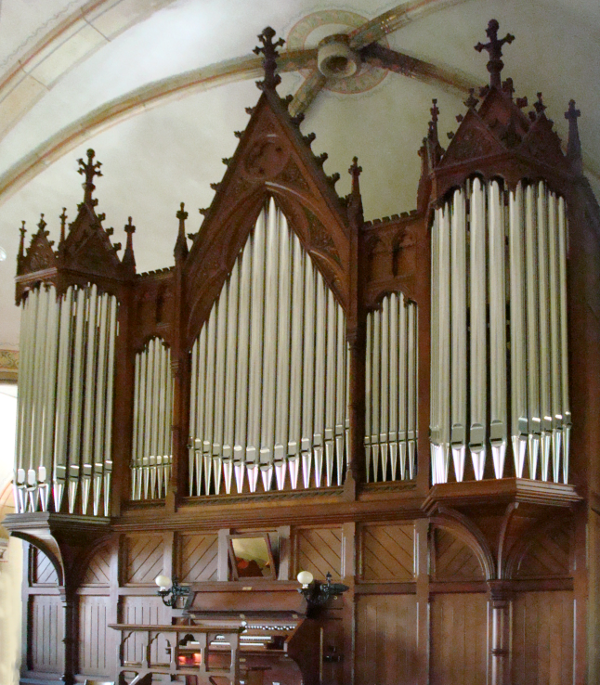The organ of the St. Boniface Church in Dietfurt/Germany was built by Ernst Roever in 1903. Roever was one of the leading organ builders in the eastern parts of Germany during the late Romantic period. More than 60 of his organs still exist in this area of the country.
Röwer’s organs are characterized by a large number of main registers of different tonal shades, blends without breaks and an economical use of reeds. For this organ, this means that about 2/3 of all registers are 16- and 8-foot registers, providing the organist with a huge palette of sounds. Both blends are straight, without breaks, and the organ uses only two reeds, a Hauptwerk pipe and a powerful Posaune pedal.
His organs are also known for their exceptionally high quality, he used the best available materials and paid great attention to good craftsmanship, thanks to which his organs work flawlessly for a very long time. Röwer brought the pneumatic block to perfection, providing a response without noticeable delay, thanks to which this pneumatic organ responds as directly as a good tracker. The action is also very quiet, and since most of the sensitive parts are protected inside the wind block, it works practically without maintenance for decades.
The organ has survived all modernization trends, keeping its tonal characteristics almost unchanged. In 2006 it was restored to perfect working order and some pipes that had been replaced with inferior material during the wars of the last century could be replaced with new pipes of the original material.
The organ is now an outstanding example of the late Romantic period and the solid craftsmanship of Ernst Röwer.
Hauptwerk (I) Cf”’
Principal 16′
Bordun 16′
Principal 8′
Gambe 8′
Hollow flute 8′
Gemshorn 8′
Zartgedackt 8′
Octave 4′
Flute 4′
Quinte 2 2/3′
Octave 2′
Cornett 5f
Mixture 3f
Trumpet 8 ‘
Schwellwerk (II) Cf”’
Gedackt 16′
Geigenprincipal 8′
Salicional 8′
Open flute 8′
Lieblich Gedackt 8′
Violino 8′
Voix celeste 8′
Fugara 4′
Flote 4′
Waldflote 2′
Mixture 3f
Pedal Cd’
Open bass 16′
Violin 16′
Subbass 16′
Gedacktbass 16′
Octavbass 8′
Cello 8′
Flotenbass 8′
Trombone 16′
Couplers etc.
I/P
II/P
II/I
sub-octave I/I
super-octave II/II
expression for manual II
crescendo
built on six unit chests with pneumatic action
wind pressure 95mm

